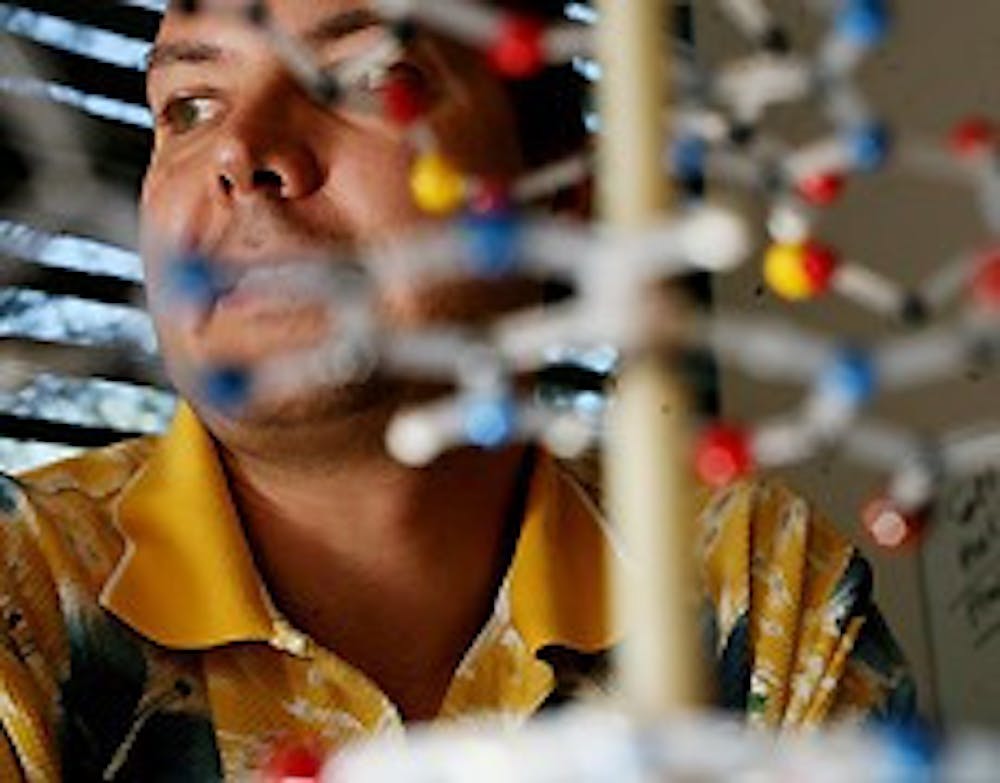DNA has been nicknamed the building block of life. If so, one ASU professor is aiming to build with upgraded bricks and mortar.
ASU researcher and associate professor John Chaput is working on what many organic chemists and nanotechnologists consider an improvement to the original 'twisting ladder' that is DNA's double helix.
Chaput's research has the potential to make medical and technological advances by creating a new type of building block called GNA.
Glycerol nucleic acid, GNA, is similar to DNA, except the sides of the ladder are composed of glycerol as opposed to DNA's phosphate sugar composition.
A synthetic creation, GNA is stronger and more stable than DNA, Chaput said.
It takes a higher amount of thermal energy, or heat, to separate the GNA strand.
It is also much more flexible than DNA, Chaput said.
GNA, a man-made molecule, is unable to build life the way DNA does, but Chaput hopes it someday will be used to build non-living structures at the cellular level.
"We could build two-dimensional arrays or possibly even geometric objects, like a square or a prism," he said.
One benefit of GNA is its stability. Unlike DNA, if inserted into a cell GNA would not be susceptible to enzymes, Chaput said.
Chaput's team includes two graduate students: Richard Zhang and Elizabeth McCullum, who have been working on and off for the past three to four years to develop GNA for use in nanotechnology, science and technology at the molecular and atomicxample of an ideal use for GNA is the ability to study specific metabolic processes, Chaput said.
"In the future, we may be able to insert an array of molecules into a cell," Chaput said.
RNA, ribonucleic acid, is the precursor to proteins. RNA is produced when a gene is activated and will base pair with GNA making it a good candidate for future use in nanotechnology, Chaput said.
Reach the reporter at: deanna.dent@asu.edu.




